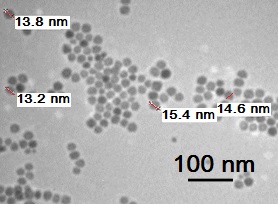Krasnoyarsk scientists have revealed useful properties of iron nanoparticles
14 March 2023 г.

According to the press service of the Ministry of Education and Science of the Russian Federation, specialists from the Federal Research Center of the Krasnoyarsk Science Center of SB RAS and Siberian Federal University (SibFU) have revealed the beneficial properties of iron oxide nanoparticles in a carbon shell. These nanoparticles have shown high efficiency in water purification from organic dyes and suitability for targeted destruction of cancer cells.
“We studied the properties of nanoparticles made of iron oxide and wrapped in a “fur coat” of carbon, and tested how they cope with the extraction of anionic and cationic organic dyes: rhodamine and eosin, which give shades of pink and red from water. It turned out that both types of dyes were well adsorbed on the surface of the nanoparticles, which is largely due to the carbon coating, which, like a sponge, “absorbs” pollutants, and the magnetite core allows one to quickly extract the nanoparticles from water,” said Deputy Director for Science of the Institute of Physics FRC KSC SB RAS, Associate Professor of the Institute of Engineering Physics and Radioelectronics of the Siberian Federal University, Alexei Sokolov.
Existing household and industrial filters, as the scientist said, do not fully cope with the task of completely extracting these substances. The substances used for water treatment - sorbents - work for a long time, adsorb pollutants, and then they are removed or they are destroyed on their own if they are made of biodegradable material. The chemical proposed by the developers is reusable, it works quickly and then, it is completely removed from the water after the task is completed.
In the future, iron nanoparticles in carbon can also be used in oncology - the first experiments gave a positive result. “Experiments with gold-coated nanoparticles are known. The mechanism of operation of our nanoparticles is similar. Aptamers can be put on such particles and directed to the affected organ, where, under the influence of an alternating electromagnetic field, the particles will begin to vibrate, destroying cell membranes and then, tumor cells from the inside. It turned out, by the way, that carbon coating can completely replace expensive gold,” Sokolov said.
The experiment on the destruction of Ehrlich carcinoma cells, as the researcher reported, was carried out using a low-frequency alternating magnetic field. The number of cells destroyed as a result of interaction with iron oxide nanoparticles in an alternating magnetic field is 27% higher relative to the control cells.
Share:
